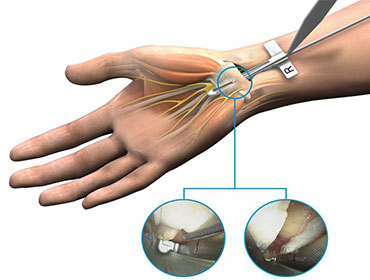Carpal Tunnel Release
Carpal tunnel syndrome is a condition in which a nerve in the wrist is squeezed. Carpal tunnel syndrome is characterised by chronic tingling, numbness, and radiating discomfort in the arms and hands. You may also feel hand weakness in some circumstances.
This illness can start slowly and progress over time. Carpal tunnel syndrome is caused by pressure on the median nerve, which runs from the forearm to the hands. Carpal tunnel release is a procedure that relieves pressure on the median nerve and alleviates carpal tunnel syndrome symptoms.
Carpal tunnel release can be done in two ways: open carpal tunnel release and endoscopic carpal tunnel release.
Open carpal tunnel release
A small cut is made near the lower half of your palm, near your wrist, by the surgeon. The carpal ligament is subsequently severed, which relieves pressure on the median nerve. The surgeon may also remove tissue from around the nerve, depending on your situation. The surgeon closes the wound with a few stitches and then wraps it in a bandage.
Endoscopic carpal tunnel release
A little cut is made near the lower half of your palm, near your wrist, by the surgeon. An endoscope is then inserted into your wrist by the surgeon. An endoscope is a long, flexible tube with a light and camera connected to it. The camera inside your wrist records video, which is displayed on a monitor in the operation room. To relieve pressure on your nerve, your surgeon will put other tools through this opening and sever the carpal ligament. The surgeon then stitches the incision closed after removing the equipment and endoscope.

